How Haste Hurt the Heroes in Batman V. Superman: Dawn of Justice (2016)
(Contains full spoilers for Batman V. Superman: Dawn of Justice as well as comparison with the Ultimate Edition release on Blu-Ray, as well as it’s “Twin Movie” Captain America: Civil War)
How the Rush to Launch A Connected DC Universe of Films Sabotaged the Super-Hero Team-Up Epic
As we pass the one year anniversary of the theatrical release of Warner Bros.’ Batman V. Superman: Dawn of Justice, the chips seem to be on the table when it comes to the divisive response to the movie. The Ultimate Edition has been released and had its initial sales, so there really remains no degree of discernment left for the movie’s potential audience. When it comes to this movie, a proper critic’s work is already done. There may be little impact and effect in an article from a mind that has percolated through the movie for a year. But I hope a considered look, well after the furor over the film and its dramatic and divisive reception, might be more dispassionate and truthful.

I don’t think Batman V. Superman: Dawn of Justice is a great movie overall, or one that succeeded in everything it attempted. But the movie, to be fair, attempted a lot, and despite its flaws I still enjoyed it immensely. At two and half hours in the theatrical cut, and just over three hours in the vastly superior Ultimate Edition, Batman V Superman is a big vessel that bears the burden of multiple purposes, like Man of Steel did before it.

Zack Snyder revealed intentions to have his Batman/Superman team-up movie take at least some inspiration from Frank Miller’s The Dark Knight Returns (without being a direct adaptation) when the film was first announced at the San Diego Comic-Con in 2013, shortly after the release of Man of Steel. That’s a tall order alone, particularly in the rebooted Superman’s mere second outing, but the resulting movie’s story also suffers as a result of grafting of the Doomsday and Dawn of Justice story onto its posterior. What could have been two great, impressive movies instead becomes compressed into a flawed creation—full of merit and great scenes but also full of artificial acceleration and gratuitous gaps.

There is a beauty and a bravery to the film, that doesn’t get recognized enough. Critical response to Batman V Superman has been savage and largely negative. The negative response was encapsulated in reviews, as well as in a number of ancillary opinion pieces and listicles, such as vox.com’s “Batman v Superman: Dawn of Justice: 19 things that don’t make sense in this nonsensical movie.” Although I don’t much stock into the value of opinion aggregators, they function as a handy shorthand, and with a 26% approval rating among critics and a 63% approval rating among audience on rottentomatoes.com it’s inarguable that the movie impressed some people and very much failed to impress others—particularly movie critics. Not being a proper critic, I am free to commit a cardinal sin of criticism: armchair screenwriting. In this article I’m going to point out not only what was missing from BvS, but interpret from the negative space the plot elements that should have been there.

Another cardinal sin of criticism I fully intend to start with here involves looking at the atmosphere outside of the movie itself, and speculating on the studio management decisions that led the movie to become what it did. Peering into studio motivations from the theater seat is of course a matter of conjecture. But with a bit of logic, a story of behind-the-scenes rivalry fits the circumstances neatly in explaining how the movie became too big a vessel to right itself in choppy waters.
Batman 5: Superman
In my previous article discussing the first in the DCEU releases “The Misreporting of Manslaughter in Man of Steel (2013),” I lamented how difficult it was for the DC Extended Universe movies to be greeted by various audiences with an open mind, because of how polarizing our digital society is and how it pushes us into extreme viewpoints with little nuance: “choosing sides.” Genre fiction fan rivalries are not a new thing, predating the internet and its innovation of allowing anyone to “join the conversation.” Nor are these rivalries unique to the fans. Over the decades, the comic book creators at Marvel and DC have played with their own rivalry for sales, thrills, and laughs.
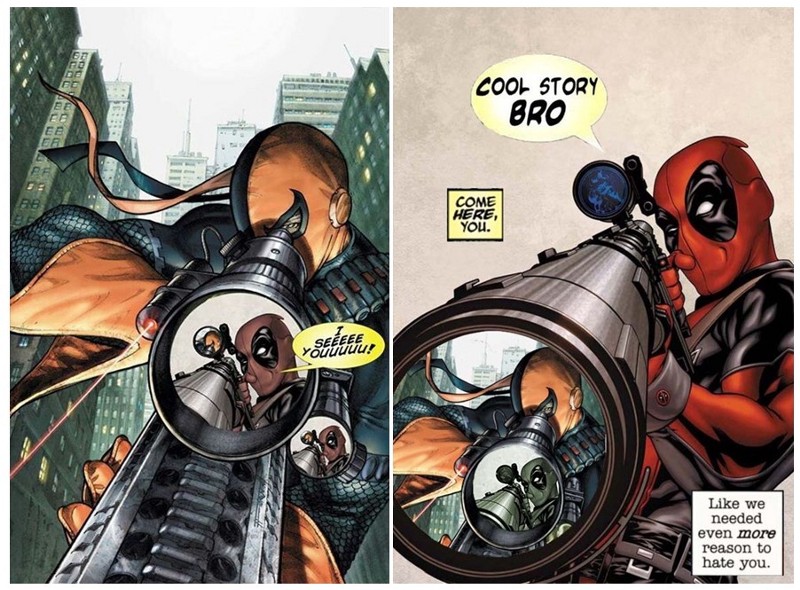
Movie studios have also shown a tendency to fall into this binary competition over the same singular thematic bone. In a town that uses story ideas as fuel for an entire industry, Hollywood producers often seem to chase the same fads and trends, by accident or design. In fact the phenomenon of “Twin Films” is so well-documented a wikipedia articles exists on the subject and is, characteristically, very thorough. Den of Geek offers a more considered look at the phenomenon from Simon Brew in their handy countdown “14 Times Similar Movies Went Head To Head At The Box Office.”
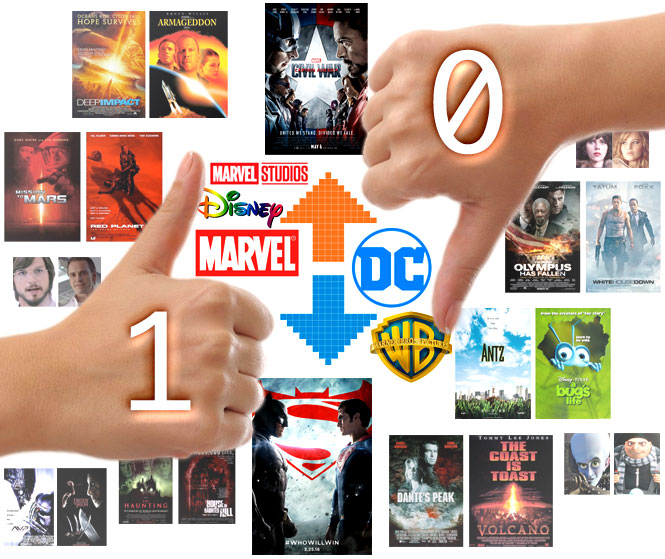
Combine the might of the obsession of fan rivalries and the long-standing rivalries of the comic publishers themselves, with a binary competitive nature built in to the movie industry, and you had a gravitational singularity of rivalry ready to implode (theoretically) once Marvel Studios launched its initiative to create an integrated Marvel Cinematic Universe. For Marvel fans, and Disney executives, the MCU served as counterpoint to the superhero movie dynasty over at Warner Brothers comprised of individual movies dedicated to the characters of Batman and Superman.
Unfortunately I can only speculate regarding the intentions of executives at Warner Brothers in response to seeing Marvel’s successful development of their integrated universe and subsequent team-up in The Avengers. Marvel’s debut team-up movie remains at this date, the fifth highest-grossing movie of all time according to Wikipedia, and the highest grossing superhero movie of all time, having just edged out Christopher Nolan’s The Dark Knight’s spot as the top super-hero movie earner, according to Boxofficemojo.com.
It’s untrue to say that Marvel Studios was the first to consider the concept of a film based on a super-hero team-up of characters established in individual cinema franchises. It’s also logical if not provably factual, in this competitive atmosphere, to infer a bit of resentment, and perhaps envy, on WB’s part. Particularly so when you consider that a 2014 interview with director Francis Lawrence reveals they had been considering scripts for team ups years before, as revealed in an article on comicbook.com:
In an interview with I Am Legend director Francis Lawrence, Collider got to the bottom of the mysterious billboard. Lawrence explained the reason that it was there is that the producer and writer of I Am Legend, Akiva Goldsman, actually wrote an early draft of a Batman and Superman movie. However, the movie never got made as the script wound up getting dropped, and Christopher Nolan launched his trilogy of Batman movies instead.
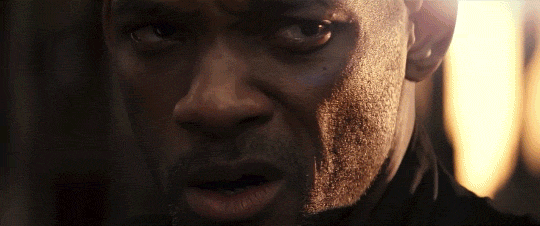
Warner Bros. had little reason to regret letting Christopher Nolan reign supreme over the Batman franchise and character for his full trilogy—it pulled record numbers in ticket sales. Yet as Nolan’s success garnered him further clout and creative control, the studio found themselves with a creator determined to tell a closed loop story of Batman, within a seemingly self-contained universe. He explains this clearly in an interview with Scott Foundas on filmcomment.com:
For me, The Dark Knight Rises is specifically and definitely the end of the Batman story as I wanted to tell it, and the open-ended nature of the film is simply a very important thematic idea that we wanted to get into the movie, which is that Batman is a symbol. He can be anybody, and that was very important to us. Not every Batman fan will necessarily agree with that interpretation of the philosophy of the character, but for me it all comes back to the scene between Bruce Wayne and Alfred in the private jet in Batman Begins, where the only way that I could find to make a credible characterization of a guy transforming himself into Batman is if it was as a necessary symbol, and he saw himself as a catalyst for change and therefore it was a temporary process, maybe a five-year plan that would be enforced for symbolically encouraging the good of Gotham to take back their city.
Frankly, as a fan of the “Batman mythos,” I found myself straining against the interpretation not due to it closing the loop on the end of the character, but its contention that Batman of the Nolan universe went into reclusive hiding between the second movie and the third. In the Nolanverse, a fantastic number of Batman’s iconic villains are removed from his story. There was never a window of time in which for them to appear and face Batman. This is indeed the kind of “comic-fan-only concern” that movie adaptations have been casting aside for years, in an admittedly legitimate quest to reign these fantastical universes into something that feels grounded and believable to the general audience. Nolan’s vision includes a very “movie-like” desire to own the entirety of its characters’ story arcs.
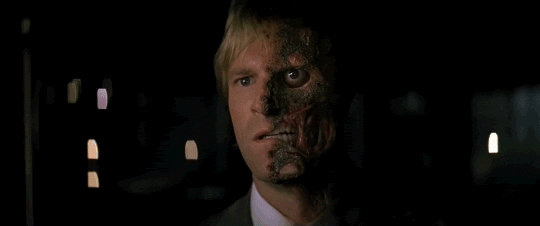
2008 was the year that The Dark Knight Rises was released in theaters, and the culmination of Nolan’s trilogy pulled in record box office numbers for Warner Brothers Pictures, but didn’t quite reach the record-setting heights set by its predecessor The Dark Knight. That same year, Marvel Studios debuted their work and united vision in Iron Man, laying the groundwork for the movie that would eventually shatter that record.
The L.A. Times quoted part of Zack Snyder’s San Diego Comic-Con announcement of Batman V Superman, and at the risk of over-interpreting, his quote clearly seems to indicate that the direction and mission of the team-up movie as an studio directive. I suppose it’s a lot of gravitas to assign to a quote about looking “for a way to tell this thing,” but to me it reveals signs of external story ideas or mandates coming to Snyder:
“I know there’s been a lot of speculation about what we’re doing,” the Man of Steel director teased the audience when he took the stage at the end of the Warner Bros. panel. “It’s official that we are going to make another Superman movie.… I sort of pored through the DC universe to look for a way to tell this thing … and I came across a thing that I feel sort of sums it up.”
Queue the line reading from The Dark Knight Returns. Having just completed Man of Steel for Warner Bros., speculation was widespread about Snyder’s (and Superman’s) next direction being determined by “disappointing” returns of the Superman reboot. Another site aggregating box office revenues for the category, the-numbers.com, helpfully reports revenues normalized for ticket price inflation. Although that adjustment certainly doesn’t cover all the ways the span of years between the various films influenced their reception, it nonetheless indicates that Man of Steel showed an impressive debut. The DCEU debut placed above Fox’s X-Men and WB’s own Batman Begins, both of which proceeded to spawn successful movie franchises… with the benefit of their respective studios’ faith in pursuing a direct sequel.

What else changed in the intervening period? Expectations. I’ve run across a great post, “Man of Steel – The $660 Million box-office disappointment?“—from 2013 on a lonely neglected blog called Movie Poster Critic—that cleverly explains the bloated expectations (if not, perhaps, the associated extensive investment) assigned to Man of Steel:
The [boxofficemojo.com] article suggests that Man of Steel’s box-office performance was middling at best, despite the fact that it has grossed in excess of $660 million worldwide. Sadly, this comes as no surprise whatsoever and is simply a direct consequence of the modern era. Expectations have risen to completely unrealistic levels during a period when the market is saturated with comicbook adaptations. While this will generally be considered as a positive development (for Marvel/Disney at least) it means that most adaptations will now have to exceed even the wildest expectations from the get-go.
Scott Mendelson, a contributor at Forbes, puts a finer point on the actual dollars at stake in the expectations posted for a film’s release, and the questionable sources from where those estimates now sometimes originate, in another 2013 piece titled Man Of Steel And The Politics Of Box Office Expectations. He concludes, with prescience:
This is of course what happens in politics as well, such as when rival parties predict a 10-point bump after a convention so they can scream “FAILURE!” when the bump is only 7 points. Tracking was once mostly internal data, used to plan marketing efforts before a film’s release. Now it’s public knowledge, used either to create the preconceived perception of failure (“Oh no, The Internship is tracking soft; it’s a flop!”) or to be used as a low-water mark for which to measure success, even as the rival studios use it as a starting point to raise expectations (“Man of Steel is tracking at $75 million… could it go as high as $100 million?!”) […] Point being, like all would-be news, take a moment to actually process who is giving you what pre-release box office figures as well as the respective spin on the actual […] figures.

No matter the spin on Man of Steel’s returns, the only outside force really capable of influencing the sequel’s director is studio management and the movie’s producers—and Batman V Superman has an extensive list of producers including Christopher Nolan himself as Executive Producer. The producer lineup, as well as the creative lineup, speaks of a production designed to capture the essence of what elevated Nolan’s Batman trilogy to record box office returns, as the Times expounds and quotes from the Warner Bros. press release issued along with the announcement:
Snyder is directing, as well as co-writing the story with David S. Goyer, who is to pen the screenplay. Goyer co-wrote The Dark Knight trilogy with Christopher Nolan and Jonathan Nolan.
“Zack Snyder is an incredibly talented filmmaker, but beyond that, he’s a fan first, and he utterly gets this genre,” Greg Silverman, president of Warner Bros. creative development, said in the news release. “We could not think of anyone better suited to the task of bringing these iconic superheroes to the screen in his own way.”
Man of Steel producers Charles Roven and Deborah Snyder are returning as producers, and Christopher Nolan and Emma Thomas are serving as executive producers on the upcoming Batman-Superman film, along with Benjamin Melniker and Michael E. Uslan.
“Whilst our Dark Knight trilogy is complete, we have every confidence that Zack’s fresh interpretation will take the character in a new and exciting direction,” Christopher Nolan said in the news release. “His vision for Superman opened the door to a while new universe, and we can’t wait to see what Zack does with these characters.”
A Batman/Superman team-up as story mandate came into development of this movie. The single letter ‘V’ after Batman’s leading name implies the studio hopes at least some of the audience perceives the movie as a Batman Five (conjuring dark versions of a multiverse reality where Man of Steel’s home release suddenly comes preceded by Batman IV:). Yet even within an interview with Brian Truitt of USA Today shortly after the start of shooting, addressing the single V in the title, Snyder reveals clues that a team-up movie was not his original plan:
When developing Man of Steel, Snyder didn’t harbor dreams of one day putting Batman on screen, too — he figured he’d one day tackle an adaptation of Frank Miller’s seminal 1980s masterpiece The Dark Knight Returns, which pits a retired Batman against government agent Superman.
It ultimately made sense with Dawn of Justice to add Bruce Wayne and his cowled alter ego to the mix. Because of Christopher Nolan’s recent Dark Knight trilogy, “I was in no rush to put Batman in the movie,” Snyder says, “but on the other hand it seemed organic the way our story was unfolding to start to feather him in.”
…The director can’t say exactly how the relationship between the two superheroes evolves, “but suffice it to say there is a ‘v’ in between their names” in the movie title, Snyder says. He explains that having the “v” instead of “vs.” is a way “to keep it from being a straight ‘versus’ movie, even in the most subtle way.”
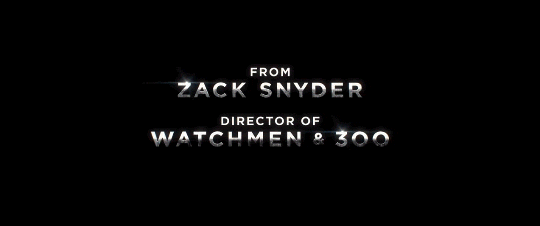
Advertisement
